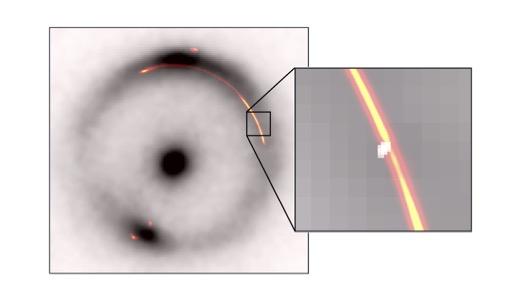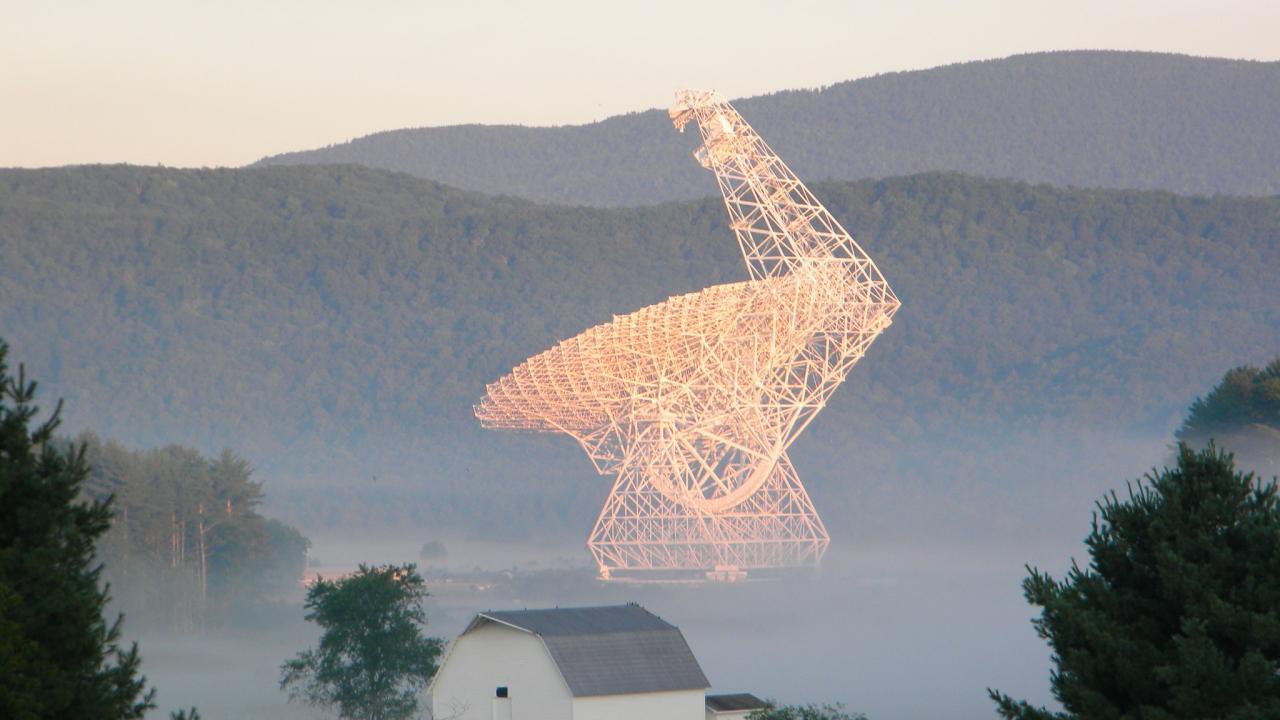Using a global network of telescopes, astronomers have detected the lowest-mass dark object yet found in the universe. Finding more such objects and understanding their nature could rule out some theories about the nature of dark matter, the mystery substance that makes up about a quarter of the universe. The work is described in two papers published Oct. 9 in Nature Astronomy and Monthly Notices of the Royal Astronomical Society.
Because the object does not emit any light or other radiation, it was detected by the way its gravity distorts light passing through or near it. This effect is called gravitational lensing. Based on the distortion, astronomers can infer the amount of matter in the unseen object.
In fact, the new object is so small that it was detected by inducing a small pinch in the distorted image caused by a much larger object, like a flaw in a funhouse mirror.

“It’s an impressive achievement to detect such a low mass object at such a large distance from us,” said Chris Fassnacht, professor in the Department of Physics and Astronomy at the University of California, Davis, who is a co-author on the Nature Astronomy paper. “Finding low-mass objects such as this one is critical for learning about the nature of dark matter.”
The mystery object has a mass about 1 million times that of our Sun. Its nature is unknown: It could be a clump of dark matter 100 times smaller than any previously detected, or it might be a very compact, inactive dwarf galaxy.
Although imperceptible except for its gravitational effects, dark matter is thought to shape the distribution of galaxies, stars and other visible bodies across the sky. A key question for astronomers is whether dark matter can exist in small clumps without any stars. This could confirm or refute some theories about the nature of dark matter.
Using telescopes worldwide
The team used instruments including the Green Bank Telescope (GBT), West Virginia; the Very Long Baseline Array (VLBA), Hawaiʻi; and the European Very Long Baseline Interferometric Network (EVN), which includes radio telescopes in Europe, Asia, South Africa and Puerto Rico to create an Earth-sized super-telescope, to capture the subtle signals of gravitational lensing by the dark object.
It is by a hundred-fold the lowest mass object yet found by this technique, suggesting that the method could be used to find other, similar objects.
“Given the sensitivity of our data, we were expecting to find at least one dark object, so our discovery is consistent with the so-called ‘cold dark matter theory’ on which much of our understanding of how galaxies form is based,” said lead author Devon Powell at the Max Planck Institute for Astrophysics (MPA), Germany. “Having found one, the question now is whether we can find more and whether the numbers will still agree with the models.”
The team is further analyzing the data to better understand the nature of the dark object, and also looking for more examples of such dark objects in other parts of the sky.
Additional authors are: John McKean, University of Groningen, the Netherlands, South African Radio Observatory and University of Pretoria; Simona Vegetti, MPA; Cristiana Spingola, Istituto di Radioastronomia, Bologna; and Simon D. M. White, MPA.
The work was supported in part by the European Research Council, the Italian Ministry of Foreign Affairs and International Cooperation and the National Research Foundation of South Africa. The National Radio Astronomy Observatory is a facility of the U.S. National Science Foundation.
Media Resources
A million-solar-mass object detected at cosmological distance using gravitational imaging (Nature Astronomy)
Media Contacts
- Chris Fassnacht, Physics and Astronomy, cdfassnacht@ucdavis.edu
- Andy Fell, News and Media Relations, 530-304-8888, ahfell@ucdavis.edu
